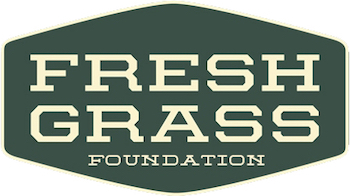Review: John Mellencamp – No Better Than This
JOHN MELLENCAMP
No Better Than This
(Rounder)
mellencamp.com
When John Mellencamp released an album of old blues and folk songs in 2003 called Trouble No More, I wrote – in a Montreal Gazette review that also ran in the Calgary Herald and Edmonton Journal – that “Mellencamp has often shown a rootsy side to his music, but here he immerses himself in roots music, particularly traditional blues and folk, as well as gospel, country and early rock ‘n’ roll. He’s learned well from old recordings and finds more than credible, individual takes on these venerable songs.”
On No Better Than This, Mellencamp seems to go even deeper into the roots of traditional American music but instead of old songs learned from Robert Johnson and Woody Guthrie records, the songs are Mellencamp’s own, written in traditional styles and recorded, as they might have been 50, 60 or 70 years ago in front of a single microphone, in mono, into a vintage tape recorder.
OK, I know that a tape recorder wouldn’t have been used 60 or 70 years ago, but it would have been 50 years ago when guys like Elvis Presley, Johnny Cash and so many others were recording in the same Sun Studio in Memphis where nine of these 13 songs were recorded. An historic recording location, to be sure.
Mellencamp and producer T-Bone Burnett took advantage of the studio floor markings that Sun producer Sam Phillips set down in the 1950s for optimal studio sound in recording Mellencamp on vocals and acoustic guitar with his live-off-the-floor band of Burnett, Andy York and Marc Ribot on guitars, bassist David Roe, drummer Jay Bellerose and violinist Miriam Sturm. There were no overdubs – what they played is what we hear.
Among the highlights of the Sun session songs are “The West End,” a gritty blues sung from the P.O.V. of someone who grew up in a lousy neighbourhood and is determined to get out; the title track, a rockabilly number whose swagger is a blend of young Elvis and young Johnny Cash; “Coming Down the Road,” a hopeful Guthrie-esque anthem; and “Easter Eve,” a vivid folk-like ballad of a violent encounter that seems modelled on the traditional “Arthur McBride.”
The rest of the tracks were recorded locations that were no less historic.
“Right Behind Me,” a duo track featuring Mellencamp with Sturm’s intense bowing on the violin, was recorded in Room 414 of the Gunter Hotel in San Antonio, the same room in which Robert Johnson recorded his first sides in 1936. Legend has it that Johnson sang facing the corner of the room and Mellencamp adopted the same position for a song that rambles through Johnsonian references to women, Chicago, and the devil.
Three solo folk-oriented love songs were recorded in the First African Baptist Church in Savannah, Georgia, a church that was a stop on the Underground Railroad in the years preceding the American Civil War. They include “Thinking About You,” a nostalgic reminiscence of a long-ago love that could be a companion to Tom Waits’ “Martha”; “Love At First Sight,” kind of a puppy-love tune for more mature folks; and “Clumsy Old World,” a song about love’s contradictions written under the probable influence of John Prine.
There may be one or two Mellencamp songs from over the years that are more memorable than these, but, to my mind, there is no better John Mellencamp album than this




